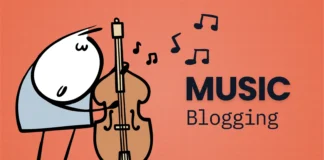
When applying for a job position, the resume is, in a way, the most important document you have to send. It is basically the representation of you and your previous work, and fitting everything into a single page probably seems both impossible and daunting. Plus, knowing that HR managers do not have enough time to read everything you have written makes it even scarier.
In order to secure that interview you have to answer three questions – What did you do? Why did you do it? What was the result? These answers are the first thing hiring managers want to see. In addition, you should show that you meet all the requirements listed in the job description and also avoid using too many complicated and technical phrases; they are not going to impress anyone.

Before writing anything, you have to determine what the resume will look like. You know that there are four major sections you have to include – work and non-work experience, education, and the list of skills you possess. When it comes to organizing the layout, you have three options – chronological order, functional or skill-based, and combination resume. The first one is most commonly used since it organizes all the information about work experience from most recent to least recent. If you are making a drastic career change then maybe you should opt for the second one because it focuses on your skills instead of experience. If you want to see numerous resume examples check The Ladders.
Once you have decided which format you have to use, it is time to write the so-called Objective. Basically, you have to inform the future employer about your career, your previous success, and what your future plans are. This summary should be only 2 to 4 sentences long, so think of a creative yet professional way to intrigue the person reading your CV.

Next, you have to write about your previous work experience. Write the list of previous jobs starting with the most recent one and go backward. You should include the title of each job, company, and the time you spent there. In addition, you should explain what you did, the skills you acquired, the tools you used, and the accomplishments you achieved. You can also focus on the responsibilities you had at each job or achievements you are proud of, especially if they are connected with the job position you are applying for. What’s more, if you have acquired some of your skills through volunteer work or side projects, you should incorporate them too.
When it comes to education, you should keep this section simple so it doesn’t take a lot of the space you can fill with professional success. All you have to include is the name of the school, the graduation year, major, and degree. On the other hand, if you are just fresh out of college, then this section should go at the top of the resume. You could also include your GPA, honors and awards, and other accomplishments.

The last, and equally important, part of your CV is the skill section. Here, you should only include those skills that you are actually very good at and those that are relevant to the job. When writing this section you should have a job description nearby so you’d know which ones to list.
To sum up, these are some major things you have to write in your resume. The last step would clearly be to proofread everything a few times and, if necessary, make some changes before sending it.
















